Service Manual for Arctic Cat 250, 300, 375, 400 & 500 ATV Models 2002
Product Gallery
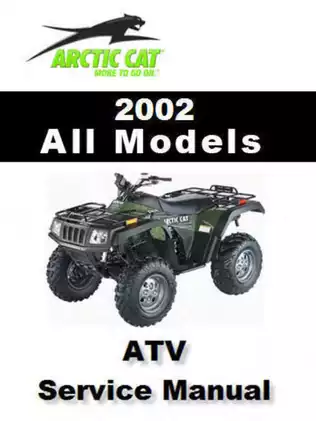
Sample pages from the Service Manual for Arctic Cat 250, 300, 375, 400 & 500 ATV Models 2002 manual

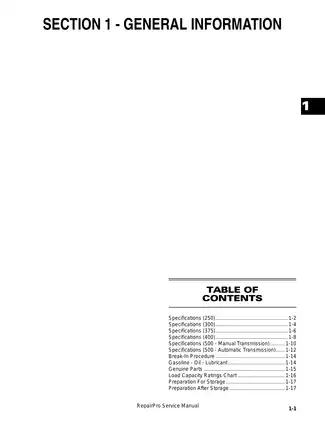
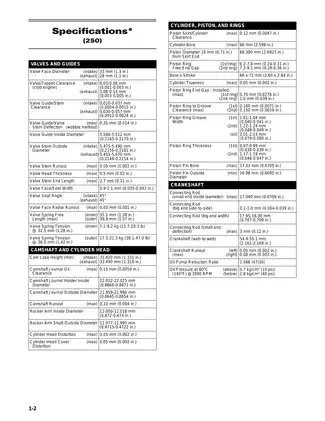
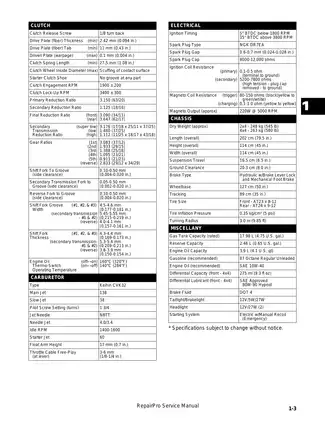
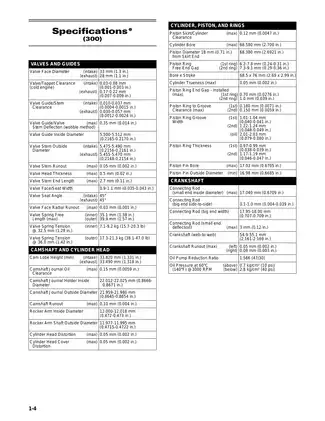
Purchase Information
2002 Arctic Cat 250, 300, 375, 400 & 500 ATV Service Manual - Technical Specifications
- Document Number / Seller:
- 26102 / Joshua Smith
- File Size:
- 107.22 MB
- File Type:
- ZIP
- Language:
- English
- Printable:
- Yes
- Estimated Download Time:
- 2.2 Minutes
- Delivery Format:
- Digital (PDF) - Instant Access
- Category:
- ATV
- Brand:
- Arctic Cat
- Reviewed and Approved:
- Dec 15, 2025
Arctic Cat Models and Parts Covered in this ATV Manual
250 (2002) 2x4 300 (2002) 2x4 375 (2002) 2x4 400 (2002) 2x4 500 Manual Transmission (2002) 4x4 500 Automatic Transmission (2002) 4x4
Complete Manual Information
2002 Arctic Cat 250, 300, 375, 400 & 500 ATV Service Manual | Complete Repair & Maintenance Guide
This professional-grade service manual is the definitive resource for the 2002 Arctic Cat ATV lineup. Whether you are a professional mechanic or a dedicated DIY owner, this manual provides the technical depth required to maintain, diagnose, and repair your machine to factory specifications.
Covering everything from routine fluid changes to complex engine rebuilds, this guide is specifically tailored to the unique mechanical configurations of the 2002 models, including both manual and automatic transmission variants.
Comprehensive Model Coverage:
- 250 (2002)
- 300 (2002)
- 375 (2002)
- 400 (2002)
- 500 Manual Transmission (2002)
- 500 Automatic Transmission (2002)
Why This Manual is Essential for Your ATV:
This is not a generic repair book. It is a model-specific technician's guide featuring high-quality diagrams, exploded views, and step-by-step procedures. It provides critical data that keeps your ATV trail-ready and safe.
Key Technical Insights Included:
- Detailed Specifications: Exact tolerances for valve clearance (e.g., 0.03-0.08 mm for the 250 model), cylinder bore, and ignition timing.
- Engine & Transmission: Full teardown and assembly instructions for all displacement sizes, including the 500cc automatic and manual gearboxes.
- Electrical Diagnostics: Comprehensive wiring information, ignition timing verification (BTDC specs), and troubleshooting for the charging system.
- Fuel & Lubrication: Carburetor adjustment, jetting specs, and oil flow diagrams to ensure engine longevity.
- Chassis & Suspension: Service procedures for the drive system, suspension bushings, and steering alignment (toe-in/toe-out).
Table of Contents:
- General Information (Specifications & Break-in)
- Periodic Maintenance/Tune-Up
- Engine/Transmission
- Fuel/Lubrication/Cooling
- Electrical System
- Drive System
- Suspension
- Steering/Frame
- Controls/Indicators
- Aids for Maintenance
- Troubleshooting
Mobile-Friendly Design:
The clear section headers and concise bullet points make this description easy to read on any device. Get the right data quickly so you can spend less time in the garage and more time on the trail.
Download Instructions for Arctic Cat ATV Manual
Frequently Asked Questions - Arctic Cat ATV Manual
What does this Arctic Cat manual cover?
This comprehensive service manual covers detailed repair procedures, maintenance schedules, troubleshooting guides, and technical specifications for Service Manual for Arctic Cat 250, 300, 375, 400 & 500 ATV Models 2002. It includes information for the following models: 250 (2002) 2x4 300 (2002) 2x4 375 (2002) 2x4 400 (2002) 2x4 500 Manual Transmission (2002) 4x4 500 Automatic Transmission (2002) 4x4.
Is this manual suitable for beginners?
Yes, this Arctic Cat manual is designed for both professional technicians and DIY enthusiasts. It includes step-by-step procedures with clear illustrations and safety guidelines for ATV maintenance and repair.
What file format will I receive?
You will receive this manual as a ZIP file (107.22 MB), which is compatible with all devices. The manual is fully searchable and printable for your convenience.
How quickly can I access the manual after purchase?
You'll receive instant access to your Arctic Cat ATV manual immediately after payment completion. The download link is valid for 3 days, with lifetime re-download guarantee.
Can I print specific sections of the manual?
Absolutely! This digital manual allows you to print any section you need, from individual pages to complete chapters, making it perfect for workshop use.
Customer Reviews and Feedback
Read what our customers say about this Arctic Cat ATV manual and share your own experience.
Add Comment
This policy contains information about your privacy. By posting, you are declaring that you understand this policy:
- Your name, rating, website address, town, country, state and comment will be publicly displayed if entered.
- Aside from the data entered into these form fields, other stored data about your comment will include:
- Your IP address (not displayed)
- The time/date of your submission (displayed)
- Your email address will not be shared. It is collected for only two reasons:
- Administrative purposes, should a need to contact you arise.
- To inform you of new comments, should you subscribe to receive notifications.
- A cookie may be set on your computer. This is used to remember your inputs. It will expire by itself.
This policy is subject to change at any time and without notice.
These terms and conditions contain rules about posting comments. By submitting a comment, you are declaring that you agree with these rules:
- Although the administrator will attempt to moderate comments, it is impossible for every comment to have been moderated at any given time.
- You acknowledge that all comments express the views and opinions of the original author and not those of the administrator.
- You agree not to post any material which is knowingly false, obscene, hateful, threatening, harassing or invasive of a person's privacy.
- The administrator has the right to edit, move or remove any comment for any reason and without notice.
Failure to comply with these rules may result in being banned from submitting further comments.
These terms and conditions are subject to change at any time and without notice.
Comments (2)